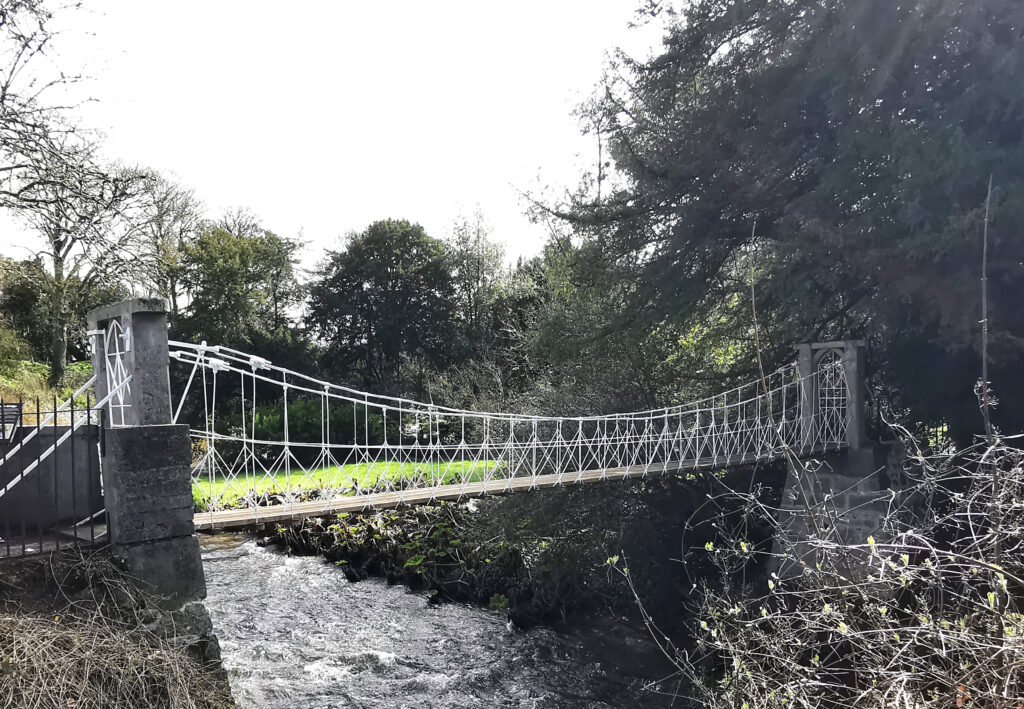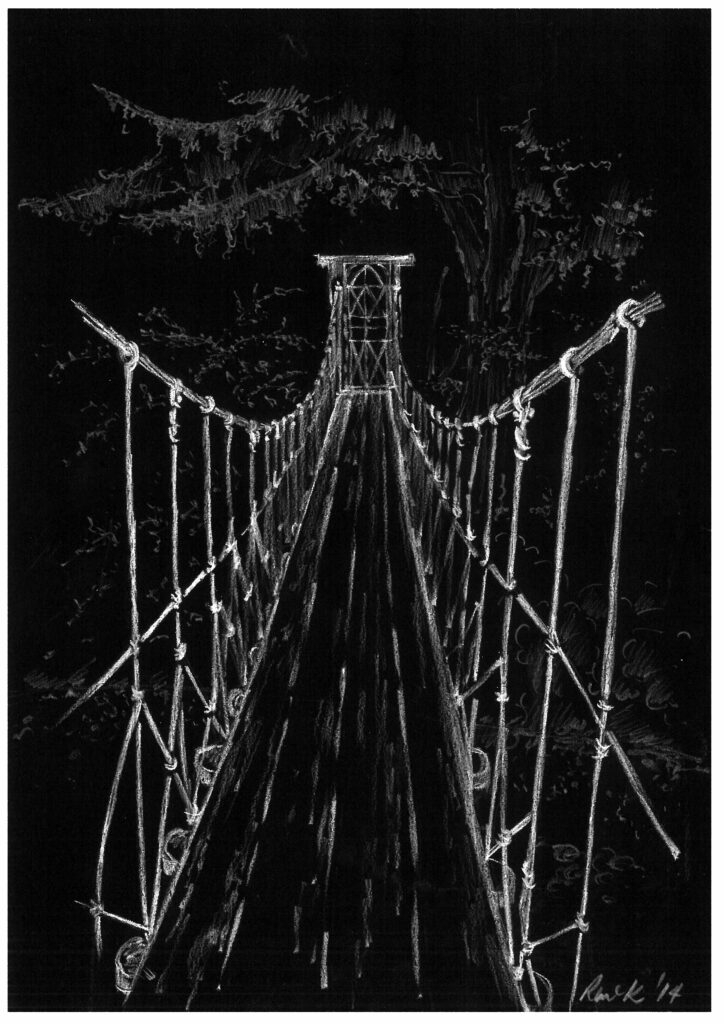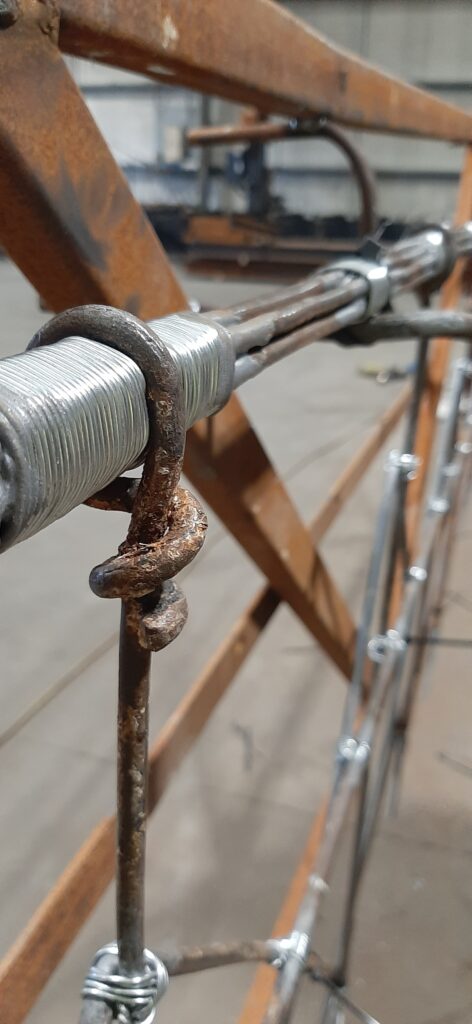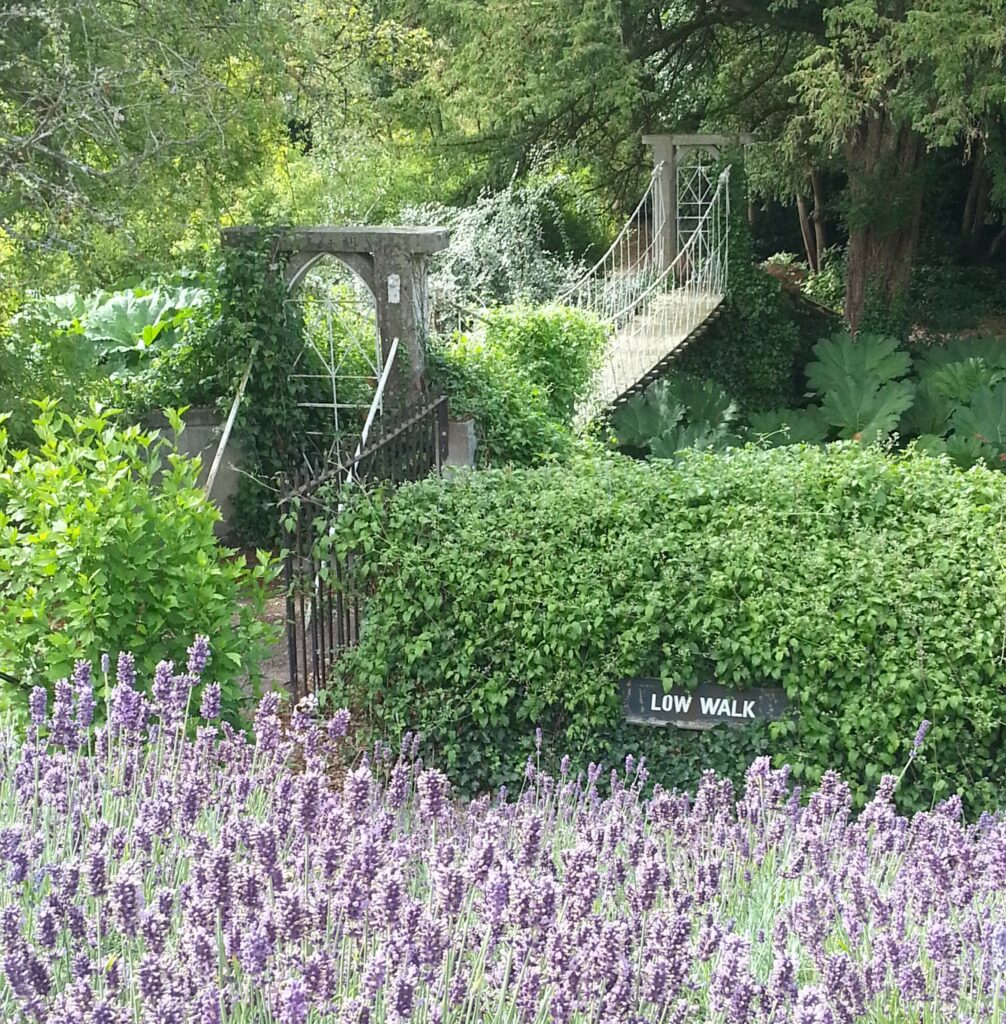
NIAH Description – No: 14819263 Birr Castle, TOWNPARKS (BB. BY.), Birr, OFFALY – Buildings of Ireland
Single-span wire suspension footbridge, built between 1821-25, within the grounds of Birr Castle over the River Camcor. Hung from reinforced-concrete uprights. Anchored to the ground behind with a pair of diagonal wrought-iton rods. Timber deck. Bridge accessed through pointed-arched openings with wrought-iron gate to opening on northern bank.
Appraisal
This bridge is one of only two suspension bridges in Offaly; the other is at Kinnity Castle. The one at Birr is both earlier and the larger of the two. It is of significant technical interest as a rare surviving example of a multiple-wire cable suspension bridge, possibly the earliest surviving in Europe. It is also significant in terms of its historical association with the innovative Parsons family. The bridge also lends interest to the riverscape and it contributes to the group of structures within Birr demesne by providing access across the River Camcor.

For more detailed information on the Folly, the Parsons Family, Birr Castle and demesne refer to Flights of Fancy – Follies, Families and Demesnes in Offaly by Rachel Mc Kenna, Birr chapter pp 88-119. You will find this book available from your local library or bookshop.

The detailed cartographic sources, specifically commissioned for the Birr demesne, highlight the importance of the gardens throughout the nineteenth century. If water was an integral element to successful landscape design, Birr was exceptionally well situated with the Little Brosna River wrapping around the demesne to the west from north to south and the River Camcor meandering through the centre of the grounds to their confluence. As with Kinnitty Castle the natural beauty of such a setting was fully appreciated and augmented with layer upon layer of perambulating walks traversing the grounds and over time the Camcor.
This route over the Camcor was provided with a typically scientific flourish in the form of a single-span wire suspension footbridge, replacing the earlier Mountain Bridge which was swept away in a flood. It is thought to have been built between 1821 and 1825. Located within the heart of the demesne it provides a direct route from the castle across the Camcor to St Brendan’s Well and in 1838 it was simply entitled ‘Chain Bridge’. The bridge is hung from reinforced-concrete uprights and anchored to the ground with a pair of diagonal wrought-iron rods. The timber deck is accessed through pointed-arched openings with a wrought-iron gate on the northern bank. This bridge is one of only two suspension bridges in Offaly and is both earlier and larger than the other bridge at Kinnitty Castle. It is of significant technical interest as a rare surviving example of a multiple-wire cable suspension bridge, possibly the earliest surviving in Europe.

The bridge lends significant picturesque appeal to the riverscape, particularly when viewed from along the ‘Pleasure Grounds’ to the north. It was designed and positioned to afford a prime vantage point from which to view the demesne, while in itself becoming a focal point both within the grounds and from the saloon within the castle. For further information on Birr Demesne refer to Flights of Fancy – Follies, Families and Demesnes in Offaly by Rachel McKenna; Birr Demesne Chapter pp 88-119.
Repairs to the Birr Suspension Bridge were based on the methodology prepared by David Kelly Partnership, Mark Murphy Consultancy Ltd and CSEA Civil & Structural Engineering for the Birr Scientific and Heritage Foundation. The suspension bridge was carefully removed off site to Mackey Ltd. Steel Fabrication Specialists for assessment and gentle repairs. Original material was retained and matching hand-made replicas repaired where required.
For further details see report prepared by David Kelly Partnership. Decayed timber cross beams and deck planks were replaced with new timber from Birr Demesne. On site damage to the stone abutments on either side of the river, was repaired with lime mortar. See OCC Final Report attached. Works were funded by the Department Historic Structures Grant 2023 and the Birr Scientific and Heritage Foundation.

